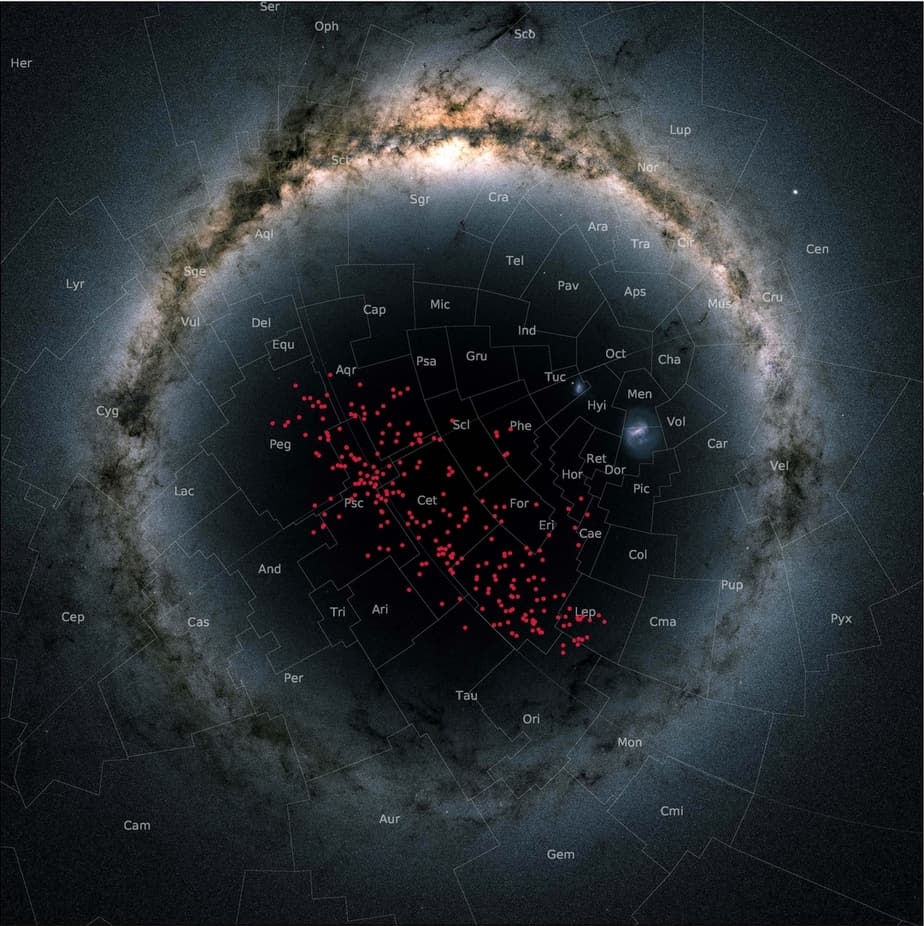A dynasty of diamonds in the sky,
You stretch beyond the hemispheres of sight
Scattering stardust like lavish silt as
Unseen tidal forces conspire to tear you apart.
A stellar stream that meanders across space,
Undulating gently out of reach
As two parallel lanes of celestial eddies
That softly lap against the night.
A confluence of uncontrollable, furious breakers,
You burn with four thousand suns
And yet as you pour into the mouth of the galaxy
Your waters are cold to the touch.
Made from dust, and to dust you will return,
Your wavelets start to decompose
Scattering sediment across the empty void
From which new life will flow.

This poem is inspired by recent research, which has found a stellar stream of at least 4,000 stars that have been moving together for over a billion years, covering most of the southern celestial hemisphere.
Within our Galaxy, the Milk Way, stars can sometimes be found gathered together, developing from birth as large clouds of molecular gas to create groups or clusters. However, the massive gravitational forces of the Milky Way constantly pull at these clusters, meaning that they tend to disperse fairly rapidly after birth. However, if the cluster is large enough then they might contain sufficient stellar mass to remain bound together for several hundred million years. Over time these stars create a stellar stream, i.e. a collection of stars that began life as a globular cluster, but which has now been stretched out along its orbit by gravitational forces.
By carefully studying the Gaia Archive (an ESA-funded mission to chart a three-dimensional map of our Galaxy), researchers were able to identify a nearby group of stars as a giant example of one such stellar stream. This particular stellar stream was found to be made up of at least 4,000 stars and is so huge that it stretches across a third of the night sky. The stream’s age is thought to be approximately one billion years old, and its relatively close proximity to the Earth (approximately 300 light years) means that detailed astronomical exploration can take place. Such explorations will provide further insight into star formation as well as providing more information about the gravitational field and mass distribution of the Milky Way.
An audio version of this poem can be heard here:
Discover more from The Poetry of Science
Subscribe to get the latest posts sent to your email.